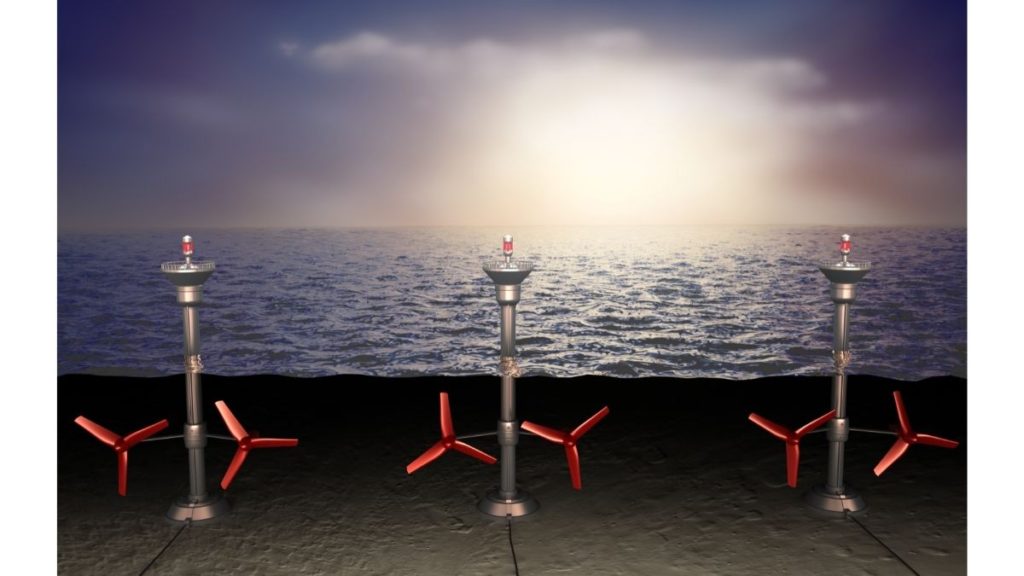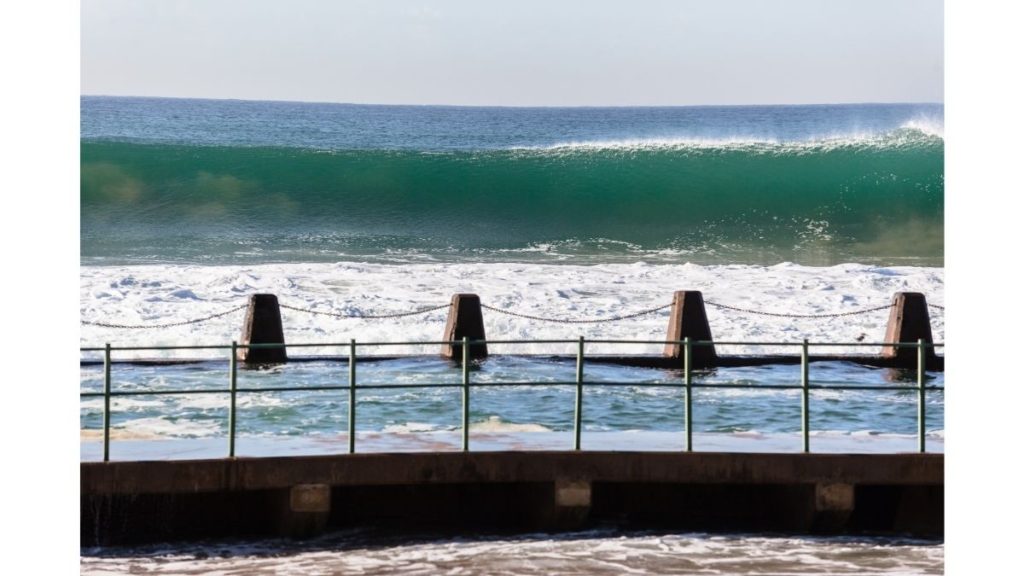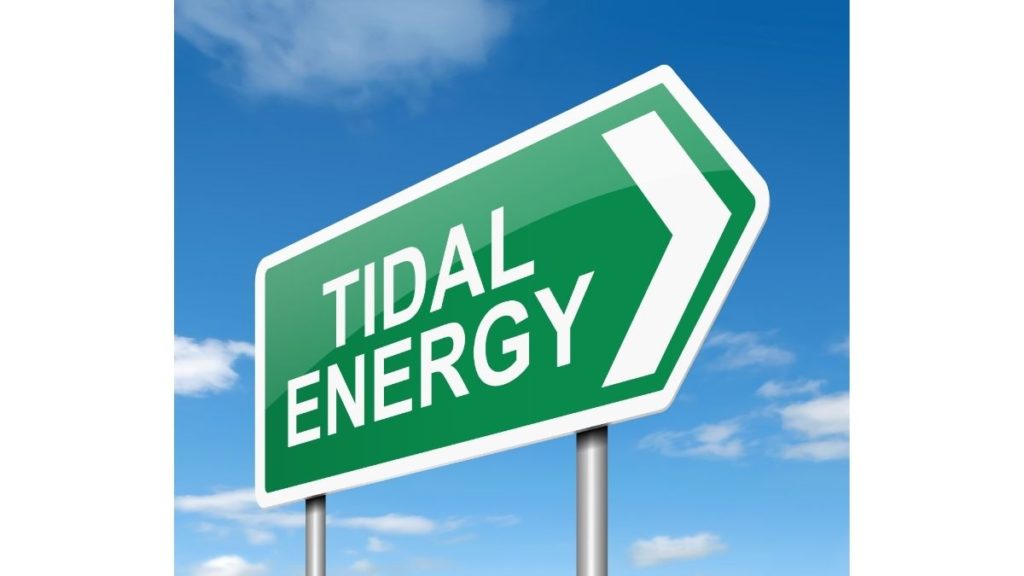Tidal Energy available worldwide adds up to nearly 3,000 gigawatts. The Romans were the first to think of tapping into this vast energy reserve and using tidal energy to turn wheels and grind grains. In comparison to wind and solar energy, tidal energy has struggled to gain widespread acceptance.
Since tidal power plants are expensive to construct and have other disadvantages that we’ll discuss later in this guide, they aren’t as popular as other renewable energy sources. However, we anticipate tidal energy to grow in popularity in the future years. Here’s all you need to know about how it works, the benefits and drawbacks, and the future for tidal energy.
What is Tidal Energy?
Tidal energy is a form of renewable energy in which we convert the tidal action in the ocean to electric power. It takes advantage of the natural rise and fall of coastal tidal waters.
The interaction of the Sun’s and Moon’s gravitational fields generates these tides. The variation in water level generated by tides includes a lot of potential energy. We convert this potential energy to electrical energy in a tidal power station.
Floodtide or high tide refers to the highest level of tidal water. Low tide, often known as ebb, is the lowest level. The tidal range is the height difference between high and low tide. Only tidal ranges of 5 metres or greater are deemed acceptable for power generation. The largest tidal power station in the world is the Sihwa Lake Tidal Power Station in South Korea, which generates 254 MW of electricity.
Also read: Solar Energy- Definition, Advantages and Future
Types of Tidal Energy
Currently, we obtain tidal energy in three ways:
- Tidal streams
- Barrages
- Tidal lagoons
Let’s have a look at each one of them in detail.
Tidal Stream Generators
Tides form a fast-flowing body of water known as a tidal stream. We place a turbine in this tidal stream to convert the tidal energy to electrical energy. A turbine is a mechanical device that extracts energy from a fluid flow. Tidal stream generators use the kinetic energy of flowing water to power turbines, just like wind turbines that use the wind to power windmills.
Interested to know more about wind energy? Why don’t you go through our blog Wind Energy: Definition, Advantages, and Future
Depending on the size of the turbine and the location of the tidal stream, the environmental impact could be severe. In shallow water, turbines are most effective. This generates more energy while also allowing ships to manoeuvre around the turbines. The turbine blades of a tidal generator rotate slowly, which helps marine animals from becoming entangled in the system.
Barrage
A tidal barrage is a giant dam built in the ocean to harness tidal energy. Turbines inside the barrage harness the power of the tides in the same way that a river dam does. As the sea rises, the barrage gates open. The water is subsequently discharged through the barrage’s turbines, which generate energy. The barrage gates close at high tide, forming a lake or tidal lagoon.
Barrages, like tidal streams, can have a significant impact on the ecology because they isolate a place from the rest of the ocean. The tidal lagoon’s changing water level could impact plant and animal life.
The salinity of the tidal lagoon decreases, affecting the organisms that can live there. Fish are stopped from entering or leaving the tidal lagoon, much as dams across rivers. Turbines in barrages move swiftly, and marine animals can be stuck in the blades.
A barrage is substantially more expensive than a single turbine for generating tidal energy. Despite the lack of fuel expenditures, it requires more building and machinery. Barrages, unlike single turbines, require regular supervision to modify power output.
Also read: Dams- Components of dam – 12 dam components explained
Tidal Lagoon
A tidal lagoon is a body of ocean water that is partly enclosed by a natural or manmade barrier. Tidal lagoons might also be estuaries and have freshwater emptying into them.
A tidal energy generator using tidal lagoons would function much like a barrage. The turbines work as the lagoon is filling and emptying. Unlike barrages, we can construct tidal lagoons along the natural coastline. A tidal lagoon power plant could also generate continuous power.
Tidal lagoons have a negligible environmental impact. We can use natural resources such as rock to build the lagoons. At low tide, they would show as a low sea wall and at high tide, seawater submerges them. Smaller organisms could swim inside the structure, and animals could swim around it. Large predators such as sharks would be unable to enter the lagoon, allowing smaller fish to thrive.
However, the energy output from tidal lagoon generators is usually low.
Tidal Energy Advantages
Let me show you some of the reasons that make tidal power an attractive option.
Renewable
The combined effects of the moon’s and sun’s gravitational forces, as well as the earth’s rotation cause tides. The difference in the potential energies of the high and low tides allows for tidal energy power generation. Since tides would be present as long as the Earth exists, tidal energy is inexhaustible and non-renewable.
Green
Tidal energy power plants don’t emit any hazardous gases. Also, it doesn’t emit any carbon. Hence it is a green and environment-friendly source of energy. One of the key advantages of tidal energy is that it requires relatively little space to produce energy.
Predictable
Waves and tidal currents are extremely predictable. The ocean develops high and low tides according to some well-known cycles. This makes developing a system with precise dimensions to generate energy easier because we already know what kind of waves the equipment will be exposed to.
Efficient even at Low Speeds
Because water has a significantly higher density than air, it is feasible to create electricity at relatively low speeds. A water speed of roughly 1 m/s can potentially create power. Wherever we employ, tidal energy generators produce a continuous, reliable stream of electricity
Tidal Energy Disadvantages
Here are some of the reasons why tidal power plants are not as common as other renewable energy power plants.
Impact on the Environment
While putting tidal generators beneath the water may be handy for people, it is not so for all sea creatures. Since the tidal energy systems rely on turbulent water to operate, we require a substantial foundation. This form of underwater construction has the potential to destroy marine habitats. The turbines can trap fishes, turtles, sewage and also injure them.
High Construction Costs
Building structures that can survive the turbulence and corrosive nature of seawater is not a cheap endeavour. Other renewable resource solutions are less expensive upfront. While tidal energy systems have a long life cycle and eventually pay for themselves, the initial investments are quite high.
Scarcity of Appropriate Locations
A tidal energy facility is not ideal for every seascape near a shore. To function successfully and efficiently, they require a highly specific collection of elements.
Only those areas where we have a tidal range of about 5 m or more, and suitable geography provides a desirable site for the economic construction of a tidal power plant. One of the key reasons for their lack of popularity is the scarcity of suitable areas for establishing tidal power systems.
Tidal Energy Future
Although tidal energy is still in its infancy, it has the potential to have a major global influence. The value of the tidal energy sector, which was assessed at $487 million in 2014, is expected to increase to $11.3 billion by 2024, according to analysts.
Is it possible for tidal power to take the place of fossil fuels? It can’t do it on its own – but with the collective energy of the wind, sun, and tides, as well as specific energy storage devices, we might be able to make the transition to a green future.
Shall we wrap up?
Conclusion
Tides are without a doubt storehouses of energy. If we can properly tap into its potential, it would be a giant leap towards generating renewable energy and completely stopping fossil fuel usage. Let’s utilise the maximum of this green energy that mother nature has hidden in tides.
In case of any doubts, feel free to ask in the comments section. Happy Learning.




